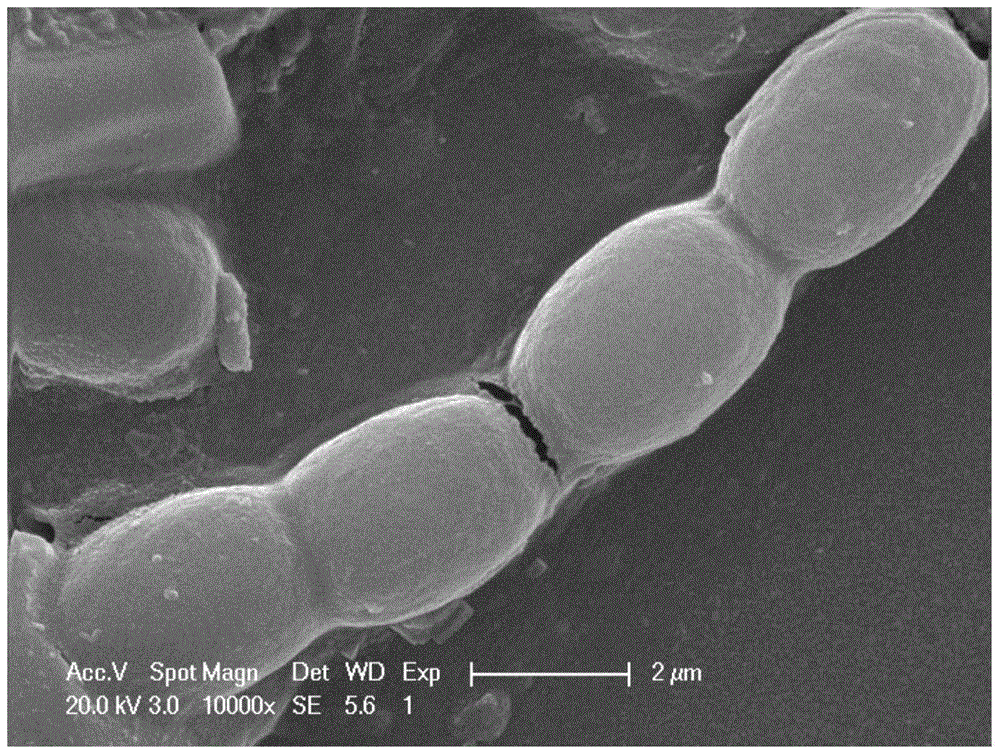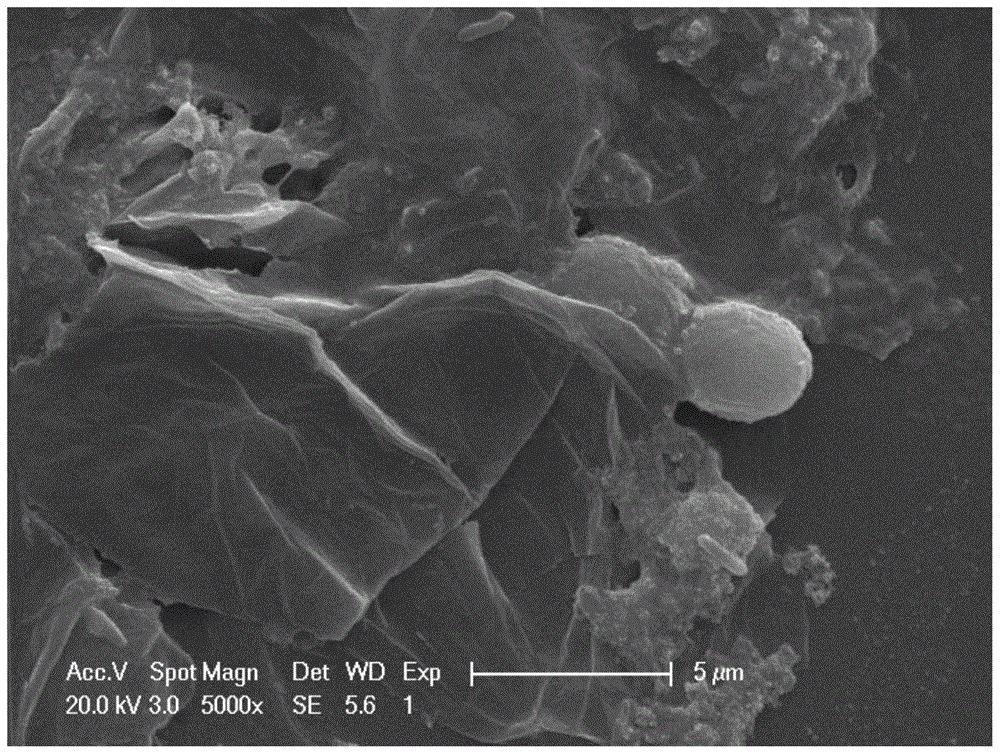A kind of method of graphene oxide composite algae removal
A graphene composite, graphene technology, applied in chemical instruments and methods, water/sludge/sewage treatment, adsorbed water/sewage treatment, etc., can solve the problems of increasing the cost of algae removal methods, and achieve easy adsorption, high Specific surface area, uniform dispersion effect
- Summary
- Abstract
- Description
- Claims
- Application Information
AI Technical Summary
Problems solved by technology
Method used
Image
Examples
Embodiment 1
[0030] A compound algae removal method, the method comprises the following steps:
[0031] (1) Ultrasonicate 100 mg / L graphene oxide in 100 mL distilled water for 30 min as nanomaterial storage solution.
[0032] (2) Copper sulfate algaecide is formulated into a solution, and then graphene oxide is added to control the concentration of graphene oxide.
[0033] (3) Prepare 18 parts of the same Anabaena, each 100mL, OD680 between 0.3 and 0.5, add the mixed solution prepared in step (2), and meet the requirements of Cu in the solution by adding different amounts of copper sulfate algicide. 2+ When the concentration is 0, 0.05, 0.10, 0.15, 0.20, 0.30 mg / L respectively, the graphene oxide concentration is controlled to be 0, 0.8, 2.0 mg / L.
[0034] (4) After stirring, the flocs in the solution can be separated.
[0035] Graphene oxide added to algae liquid can be adsorbed on the surface of algae cells. When a small amount of nanometer graphene oxide and heavy metal ions coexist i...
Embodiment 2
[0038] (1) Ultrasonicate 100 mg / L graphene oxide in 100 mL distilled water for 30 min as nanomaterial storage solution.
[0039] (2) The cadmium chloride algicide is formulated into a solution, and then graphene oxide is added to control the concentration of graphene oxide.
[0040] (3) Prepare 20 parts of the same Microcystis aeruginosa, each 100 mL, OD680 between 0.1 and 0.2, add the mixed solution prepared in step (2), and meet the requirements of the solution by adding different amounts of cadmium chloride algaecide. Cd 2+ When the concentration is 0, 0.2, 0.4, 0.5, 0.7mg / L, the concentration of graphene oxide is controlled to 0, 1.0, 5.0, 10.0mg / L respectively;
[0041](4) After stirring, the flocs in the solution can be separated.
[0042] The effect of graphene oxide alone on Microcystis aeruginosa Figure 5 , Microcystis aeruginosa on Cd alone 2+ The scanning electron microscope photos under the action are as follows Image 6 , Microcystis aeruginosa in Cd 2+ The...
Embodiment 3
[0045] (1) Ultrasonicate 100 mg / L graphene oxide in 100 mL distilled water for 30 min as nanomaterial storage solution.
[0046] (2) Copper sulfate algaecide is formulated into a solution, and then graphene oxide is added to control the concentration of graphene oxide.
[0047] (3) Prepare 21 copies of the same Microcystis aeruginosa, 100mL each, with OD680 between 0.3 and 0.4, add the mixed solution prepared in step (2), and meet the requirements of Cu in the solution by adding different amounts of copper sulfate algaecides. 2+ When the concentration is 0, 0.02, 0.05, 0.08, 0.1, 0.15, 0.2mg / L, the concentration of graphene oxide is controlled to 0, 2.0, 5.0mg / L respectively;
[0048] (4) After stirring, the flocs in the solution can be separated.
[0049] Different concentrations of graphene oxide in different Cu 2+ The influence on the concentration of Microcystis aeruginosa under the condition of concentration is as follows Figure 10 As shown, different concentrations o...
PUM
| Property | Measurement | Unit |
|---|---|---|
| thickness | aaaaa | aaaaa |
| thickness | aaaaa | aaaaa |
Abstract
Description
Claims
Application Information
 Login to View More
Login to View More - R&D
- Intellectual Property
- Life Sciences
- Materials
- Tech Scout
- Unparalleled Data Quality
- Higher Quality Content
- 60% Fewer Hallucinations
Browse by: Latest US Patents, China's latest patents, Technical Efficacy Thesaurus, Application Domain, Technology Topic, Popular Technical Reports.
© 2025 PatSnap. All rights reserved.Legal|Privacy policy|Modern Slavery Act Transparency Statement|Sitemap|About US| Contact US: help@patsnap.com



